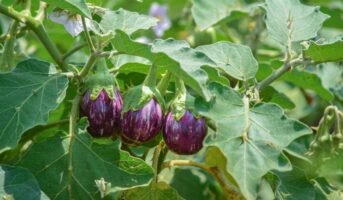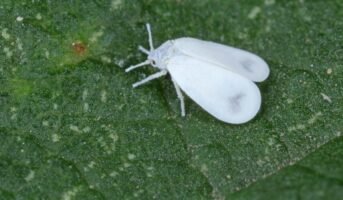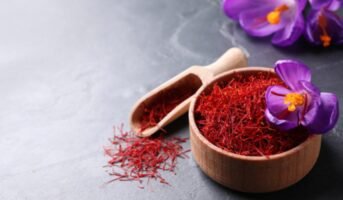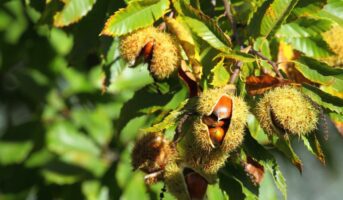Aralia Green, Polyscias fruticose plant
Aralia is one of the most common indoor plants in the world. Most suitable for indoors landscaping the easy to grow and maintain, Aralia Green has leaves that area either spinach shaped, round or lacy in appearance. The leaves are in white, green, cream and golden colours. Also, these leaves are from trunks that are woody and thick and finely curved, giving the plant a nice structure and appearance.
The plant itself is pretty low maintenance, so people who are not into gardening can also keep them without any issues. They thrive indoors in natural light and low light, so they are a top choice for tabletop decor. However, more expensive varieties of the plant like the Ming Aralia are collectibles that are rather rare to find.
Aralias, if kept in pristine conditions with the right care, can grow tall and become prized possessions of its owner. Although it can never grow up to the height of a full tree, a mature plant, depending on the variety, can actually touch your ceiling in a few years’ time.

Source: Pinterest
Key facts about Aralia plant
| Scientific name: | Spikenard |
| Leaf Type: | Mostly round and frilly |
| Varieties available: | over 70 |
| Season: | All year long |
| Sun exposure: | Bright indirect sunlight |
| Ideal Temperatures: | 15.6°-29.4°C |
| Soil Type: | Fertile and well-drained soil |
| Basic Requirements: | Indirect light, moderate watering, nitrogen fertilisers |
| Ideal Location: | Tabletop, window sill, stairwell |
| Maintenance: | Low |
Aralia Plant varieties
This beautiful multi-stemmed plant has over 70 species. There are multiple types of aralia with different colored and patterned leaves. Aralia plants are kept around the house to add a touch of colour and elevate the entire look of a room.
Common types of Aralia plant
Aralia plants come in different varieties. These plants have mostly round-shaped leaves that are located in clusters throughout the stem and branches. Their leaves even come in other shapes and depend on the type of Aralia you have bought. The most common varieties, however, sport round leaves with curly edges. The leaves can be fully green or have touches of white mixed with them.
Here are some of the top varieties of Aralia that are commonly kept by plant owners:-
-
Ming aralia plant

Source: Pinterest
Ming aralia plant can be called a prized possession for people who know the worth of the plant. This aralia plant is highly coveted by gardeners and plant enthusiasts because the plant is rather difficult to source and costs a lot of money. This variety is actually an Indian native and can grow up to 1 to 2 metres in height. The leaves of the ming aralia plant are droopy and have dark green pigment with a glossy texture. The ming aralia plant can also grow upto 3 feet over the years as long as you care for them.
-
Variegated white Aralia plant

Source: Pinterest
Variegated white aralia plant is another variety of the aralia plant family. This is another popular variety that has found its place in many homes around the world. The leaves on this aralia plant are round with frilly edges. The colour of the leaves is the most striking feature of the plant. The leaves on the variegated white aurelia have a unique blend of white and green. Unlike many variegated plants, the variegation on the white aurelia plant never reverses completely. The dwarf variety of the white aralia plant is popular as an indoor plant and preferred by people who are not avid gardeners.
-
Balfour Aralia plant

Source: Pinterest
The Balfour aralia plant is another favourite of plant lovers due to its big green leaves. This variety of aralia actually produces big round leaves that are less frilly than the white and ming aralias. Balfour aralia has more scattered leaves as opposed to the bunches found in other varieties. The leaves of the aralia plant may have a slight white tinge at the ends and not a full-blown variegation. They are ideal as room decoration and look best when kept on the ground.
Aralia plant: Ideal conditions to grow
Aralias are pretty low maintenance and perfect for beginners who want to learn gardening. The plant thrives in moderate weather conditions and requires very little sunlight. It doesn’t need extensive care like most flowering plants, which is why it is so popular among people. If you are growing an aralia plant at home, here are some guidelines that will help you take care of it properly:-
Soil
Aralia plants require well-draining soil that doesn’t stay wet for extended periods of time. Normal garden soil mixed with some perlite can be the best mix for aralia plants. High nitrogen fertilisers can be added to the soil at regular intervals for better plant growth.
Light
Aralia plants can thrive in low light conditions and don’t require direct sunlight. A few hours of indirect bright light can be enough to keep the plant happy and healthy. When storing an aralia plant, make sure it doesn’t get a lot of sunlight that may scorch the leaves and make them brittle. However, also remember that plants don’t survive in zero sunlight, so some amount of sunlight is required for plant growth.
Temperature
The best temperature conditions for keeping Aralia plants are between 65-80°F or 15.6°-29.4°C. The plant cannot survive extreme temperatures that go beyond this range.
Humidity
Aralia plants love humidity and thrive in humid environments. The plant requires at least 50% humidity to survive. If your house experiences low levels of humidity, it is recommended to get a humidifier for the healthy growth of the aralia plant.
Aralia Plant benefits
Ornamental
Aralia is an ornamental plant that is simply used to decorate the house. It can be added to prayer rooms and exercise rooms to add freshness and some greenery around. It will give your house a very bohemian look especially when kept in living rooms.
Medicinal
It does have a lot of benefits and is used for making medicines in Ayurveda.
Here are some amazing health benefits of Aralia that people rarely know:-
- Aralia contains extracts that are used in Ayurveda to make anti-inflammatory medicines.
- The Aralia plant is said to lower blood pressure and is highly useful for people with hypertension.
- It can help patients who suffer from seizures and epilepsy attacks.
- The plant has antiseptic properties that make it great for treating wounds and bruises.
- It is known to treat menorrhagia and infertility issues.
- Alienates symptoms of constipation and irritable bowel syndrome, and aids digestion.
FAQs
Is Aralia toxic for pets?
Yes, Aralia plants are actually toxic for animals, so pet parents cannot have them at home.
Which is the best potting mix for Aralia plants?
A potting mix consisting of garden soil, perlite, and some nitrogen-based fertiliser is best for keeping Aralia plants.
Is Aralia edible?
Yes, some varieties of the Aralia plant are completely edible, from the roots to the shoots and leaves.
Housing News Desk is the news desk of leading online real estate portal, Housing.com. Housing News Desk focuses on a variety of topics such as real estate laws, taxes, current news, property trends, home loans, rentals, décor, green homes, home improvement, etc. The main objective of the news desk, is to cover the real estate sector from the perspective of providing information that is useful to the end-user.
Facebook: https://www.facebook.com/housing.com/
Twitter: https://twitter.com/Housing
Email: [email protected]











